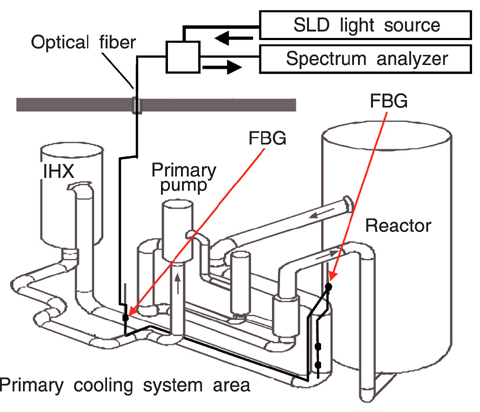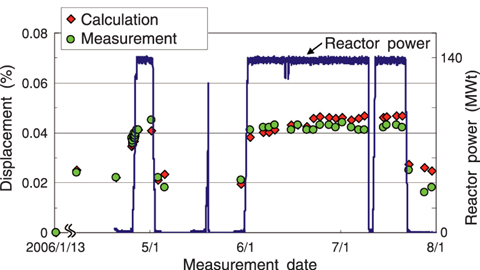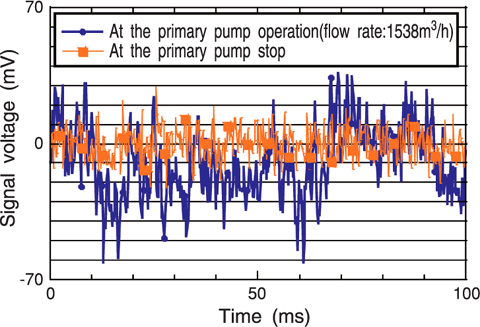
Fig.14-11 Experimental setup of measurement system using optical fiber in the "JOYO" primary cooling area

Fig.14-12 Measured displacement of the piping support by FBG

Fig.14-13 Measured vibration of the piping support by FBG
In the sodium-cooled fast reactor (SFR), circulating pumps and several piping support systems were installed around the primary cooling system piping. How to efficiently and accurately measure the displacement and vibration in high temperature and high radiation components is important, in order to monitor the SFR structural integrity. In the experimental fast reactor "JOYO", displacement and vibration measurements of the primary cooling system were carried out using Fiber Bragg Grating (FBG) to resolve this challenging issue (Fig.14-11).
FBG is an optical fiber sensor, which reflects light at a specific wavelength. Temperature variations or displacement applied to the FBG causes the reflected wavelength to shift. The FBG is a simple instrument, because several FBGs can be combined in a single fiber.
Displacement can be evaluated from a wavelength shift ∆λ 1 of the FBG with both-ends fixed. However, ∆λ 1 includes a wavelength shift ∆λ 2 due to temperature variation. This becomes to be a source of displacement measurement error. Therefore, ∆λ 2 of an FBG with one end fixed for detecting only temperature variation was eliminated from∆λ 1. The measured displacement matched the calculation based on the thermal expansion. The measured result indicates that thermal displacement of a piping support was accurately measured (Fig.14-12).
Vibration can be measured as a high frequency displacement. A faster vibration, however, cannot be measured by a spectrum analyzer, because its sampling time is in the order of seconds. In the measurement, the reflected wavelength shift was converted into light magnitude using an optical filter, and then the voltage signal corresponding to the displacement was obtained using a photo diode. This enables a high speed measurement of the vibration. Signal fluctuation at the primary pump operation was larger than when the pump was stopped. The measured result indicates that vibration due to the pump operation was successfully measured (Fig.14-13).
The measurements were successfully conducted with no degradation of the optical fiber up to an accumulated γ-ray dose of 4×104 Gy, corresponding to 120 effective full power days of operation. The measured results demonstrated that the FBG is suitable for the monitoring of the SFR structural integrity.